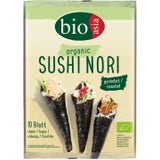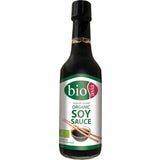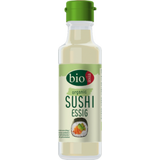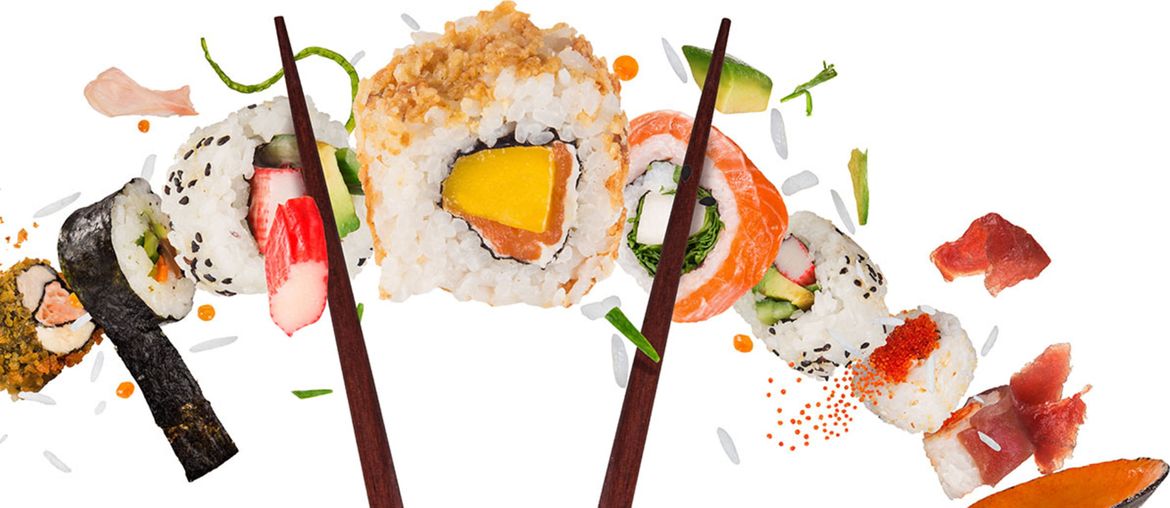Homemade Sushi: Useful Tips for Beginners & Experienced Cooks
Preparing sushi in your own kitchen does not involve extensive cooking experience or superpowers. With the right basic equipment, a few tips from professionals and high-quality ingredients you can make this culinary foray into Japanese cuisine whether it is just for yourself or a group of friends. The important thing to bear in mind is that practice makes perfect - so don't despair if you don't get it perfect on your first try. Just relax and have fun!
The basics
Start out with a bamboo mat to roll your sushi (called "makisu", available in most Asian supermarkets) and a really sharp knife. The knife has to be really sharp for cutting fine strips of vegetables, fish and seaweed. A super sharp knife is also indispensable for cutting the delicate rolls into neat and precise portions without crushing them. Real "Sushi Su" or sushi seasoning liquid requires high-quality rice vinegar and is absolutely essential to give the rice a smooth texture and characteristic sour note. A "shamoji" or rice spoon is not a must but is very helpful when stirring, filling or spreading rice. A wide wooden or plastic spoon works just as well.
You can't make sushi without rice!
Perfectly made sushi rice is the star ingredient in sushi. Always use real sushi rice and follow the instructions for preparation on the package. Secondly, and this is a tip from professionals that you should follow: wash the rice thoroughly before cooking. Rinse 3 to 4 times until the water runs clear as this removes excess starch. Experts then let the rice soak in the right amount of water - about 300 ml of water for 250 g of rice - for 20 to 30 minutes. Then cover and cook at the lowest heat setting for about 18 minutes. Take it off the heat and let it rest with the lid on for a further 8 minutes. Next, add the Sushi Su. Don't stir it in though! Professionals loosen the rice grains carefully with a fork or spatula and pour Sushi Su carefully over the loosened grains. In this step, the cooked rice is usually transferred to a wooden or ceramic bowl and allowed to cool for about 40 minutes until lukewarm.
More tips to make things easier:
Is the rice sticking to your hands? Experienced sushi chefs moisten their hands with a little vinegar water to prevent the rice grains from sticking to their hands. Keep a bowl of vinegar water ready before your start assembling your sushi.
Your sushi roll is ready and waiting to be cut? The sharpest knife cuts even better when it is moistened with water.
Make the sushi su: Once your rice is cooked, you can prepare the sushi seasoning liquid called "Sushi Su". Mix about 25 ml rice vinegar with 8 g sugar (optionally add 4 g of salt if desired). Please do not use steel bowls - the acid in the vinegar might react with the metal. Containers made of wood, bamboo, ceramic or glass are better.
The cling film trick: To make California rolls, spread the rice directly on the bamboo mat, with no nori sheet in between. To prevent the rice from sticking to the mat, line the mat with cling film first and tuck the edges under the mat.
Two tips for that extra touch of authenticity:
Never dip the rice in soy sauce. Only fish or nori is lightly dipped into it.
Raise a toast like the Japanese? Kanpai!
Related products
-

bioasia Organic Sushi Nori, Roasted, 25 g
- Gently roasted
- Very aromatic
- Great for sushi and more
€ 4,69 (€ 187,60 / kg)Delivery by July 18
-

bioasia Organic Soy Sauce, 150 ml
-5%- Made with the traditional brewing method
- Organic quality
- Vegan
€ 2,27 € 2,39 (€ 15,13 / l)Delivery by July 18
-

bioasia Organic Sushi Vinegar, 150 ml
- Ideal for sushi rice
- Adds the perfect flavour
- Vegan
€ 2,59 (€ 17,27 / l)Delivery by July 18
-

bioasia Organic Rice Vinegar, 5% acidity, 150 ml
- For seasoning & refining
- Delicious aroma
- Vegan
€ 1,59 (€ 10,60 / l)Delivery by July 29
Magazine Articles:
-
Austria: Free standard delivery from € 54,90
-
Free
returns -
24-hour shipping
More than 11.800 products

